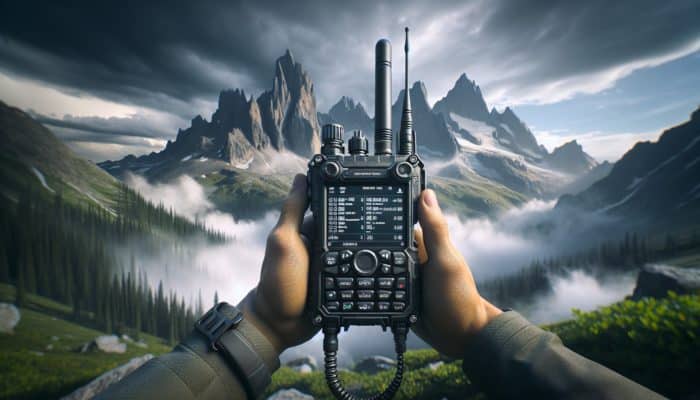Crucial Strategies to Protect Your Pets Right After an Earthquake
Effective Techniques for Locating Your Pets After an Earthquake

Following an earthquake, it is vital to swiftly locate your pets to ensure their safety and comfort. Initiate your search by checking the immediate vicinity of your home, as pets often seek shelter in hidden areas out of fear. After ensuring your own safety, conduct a thorough search within your home, examining closets, underneath beds, and other secure spaces where they might have taken cover. The disarray and confusion that ensue after an earthquake can be incredibly stressful for animals; therefore, calling out their names or making familiar noises may encourage them to emerge from hiding.
Once you have meticulously searched your home, extend your search to the surrounding areas. Examine your yard, peek under porches, and look inside garages. If your pet is still unaccounted for, calmly walk around your neighborhood while calling out their name. The goal is to create a reassuring environment that helps them feel safe enough to approach you if they are nearby, enhancing the likelihood of reuniting with your beloved companion.
Immediate Actions to Take If Your Pet Is Missing After an Earthquake
When a pet is missing in the wake of an earthquake, it is imperative to act quickly and methodically. Begin by carefully inspecting your immediate surroundings, and involve your local community in the search. To enhance your chances of finding your pet, follow this comprehensive list of effective actions:
- Work together with neighbors to see if they have spotted your pet.
- Visit local animal shelters to notify them about your missing companion.
- Create flyers that include a clear image and detailed description of your pet.
- Utilize social media platforms to raise awareness about your lost pet.
- Search online lost and found pet groups as well as community bulletin boards.
- Consider employing pet recovery services that use technology to assist in locating your pet.
- Stay calm and persistent; often, pets may return home on their own.
By adhering to these recommended actions, you can significantly boost your chances of reuniting with your cherished furry friend.
How to Assess and Treat Your Pet's Injuries Following an Earthquake
Once you have successfully located your pets, it is essential to quickly evaluate their injuries and overall health status. Begin by gently inspecting your pet for visible wounds, signs of limping, or indications of distress. Look for cuts, bruises, or swelling, and pay close attention to their breathing patterns. A pet that is anxious or injured may react differently under stress, so it is crucial to approach them calmly and speak in soothing tones to help them feel more secure.
Beyond visible injuries, remain vigilant for any behavioral changes. If your pet exhibits excessive panting, seeks hiding places, or shows unusual lethargy, these could be signs of stress or injury. If you suspect any serious injuries, do not hesitate to consult a veterinarian for a professional assessment. It is always prudent to prioritize your pet's health and safety, as timely intervention can significantly influence their recovery.
How to Meet Your Pet's Basic Needs After an Earthquake

After confirming that your pets are safe and accounted for, your next priority is to address their essential needs for comfort and health. Access to fresh water is paramount; dehydration can set in quickly following a distressing event like an earthquake. Ensure that you have an adequate supply of clean water available, especially if the water supply has been compromised. Additionally, stock up on an ample supply of food, taking into account any specific dietary needs your pet may have, to ensure their continued well-being.
Creating a safe and comfortable environment for your pets is equally critical. Settle them in a familiar area of your home that feels secure, away from chaos or loud noises. Providing their favorite blankets or toys can offer much-needed comfort during this unsettling time. Remember, maintaining a tranquil environment can significantly reduce their anxiety and help them adjust more smoothly to the post-earthquake situation.
How to Prepare Your Pets for Potential Aftershocks
Since aftershocks frequently follow an earthquake, it is crucial to ready your pets for these subsequent tremors. Keep your pets close by securing them on a leash or in a sturdy carrier during any aftershocks. Pets can react unpredictably during these events, and restraining them can prevent them from fleeing in fear or injuring themselves in the process.
Additionally, familiarize your pets with emergency protocols. Regular training and positive reinforcement can teach them how to respond during aftershocks. Engaging in calming activities, such as gentle petting or offering treats, can help maintain a sense of routine and normalcy. Be prepared to reassure them with your presence; your calm demeanor can greatly influence their reaction to aftershocks, helping them feel more secure.
Expert Insights on Conducting Post-Earthquake Pet Safety Evaluations
Inspiring Real-Life Stories of Successful Pet Rescues Post-Earthquake

Successful pet rescues following earthquakes often hinge on a combination of community initiative and innovative strategies. For example, during the devastating 2010 earthquake in Haiti, numerous organizations came together to rescue pets trapped beneath rubble. Reports indicate that dedicated volunteers, employing GPS tracking technology, successfully located and rescued many animals. These examples underscore the critical role of community involvement and preparedness in ensuring pet safety during disasters.
Here are some key strategies employed in these successful rescues:
- Partnering with local veterinarians to provide essential medical care.
- Utilizing social media platforms to engage the community for tips and sightings.
- Employing drone technology to search for pets in hard-to-reach locations.
- Establishing temporary shelters for rescued animals.
- Creating a volunteer network specifically trained in animal rescue operations.
- Setting clear guidelines for the recovery and reunification of pets post-earthquake.
- Documenting successful reunions to inspire further community involvement.
These uplifting stories serve as powerful reminders of the resilience and dedication of communities during crises, providing hope and motivation to pet owners facing challenging circumstances.
How to Effectively Assemble a Comprehensive Pet Emergency Kit
Putting together a well-stocked pet emergency kit is essential for ensuring that your pet's needs are met following an earthquake. Begin by gathering all necessary supplies in a sturdy, easily accessible container. Your kit should include essentials such as non-perishable food, sufficient fresh water, and any medications your pet may require. Additionally, include items like a leash, a secure carrier, and comfort supplies such as toys or blankets that can help soothe them during stressful times.
Furthermore, consider incorporating a first aid kit specifically designed for pets, as it can be invaluable in treating minor injuries. Regularly check the contents of your kit to ensure that food and medications are up-to-date and fresh. Educating yourself on how to effectively use these supplies during an emergency can make a significant difference in your pet's health and safety. A well-prepared emergency kit not only addresses immediate needs but also provides peace of mind, knowing you are ready for any situation.
Understanding the Psychological Impact of Earthquakes on Pets
Earthquakes can leave a lasting psychological impact on pets, leading to a variety of behavioral changes. Pets may exhibit signs of anxiety, such as excessive barking, hiding, or changes in their eating habits. Recognizing these responses enables pet owners to provide better care and support during the recovery process. Research indicates that animals, like humans, can experience post-traumatic stress disorder (PTSD) after such traumatic events.
To help your pet cope with the aftermath of an earthquake, consider offering extra comfort and reassurance. Maintaining a routine as much as possible is crucial, as familiar schedules can help mitigate anxiety. Engaging in interactive play can also be beneficial, redirecting their focus and rebuilding their confidence. If behavioral issues persist, consulting with a veterinarian or an animal behaviorist may provide you with additional strategies tailored to your pet’s unique needs.
What Steps Should You Take If Your Pet Goes Missing After an Earthquake?
If your pet goes missing after an earthquake, immediate action is critical. Start by retracing your steps and checking nearby areas where your pet might have fled. Use technology to assist in their recovery; for instance, checking social media or dedicated pet recovery apps can connect you with others who may have seen your pet.
Engaging the community can greatly enhance your chances of finding your missing pet. Create and distribute flyers featuring a recent photo and detailed description of your pet, and reach out to local shelters to report them as missing. Utilize neighborhood apps and websites to inform local residents about your situation. Often, pets are found within a few blocks of where they went missing, so broadening your search radius can be an effective strategy. Remember that patience and persistence are vital during this challenging time.
How to Safely Reunite Pets with Their Owners After an Earthquake
Facilitating the safe reunion of pets with their owners post-earthquake is a critical process that requires careful protocols. First and foremost, if a pet is found, checking for identification, such as microchips or tags, is essential to ensure they are returned to their rightful owner. Local shelters often act as hubs for lost pets; therefore, transporting found pets to a shelter can streamline the reunion process.
Consider implementing community recovery efforts where volunteers can assist in identifying lost pets through social media and community boards. Establishing clear communication channels between shelters, veterinary clinics, and the community can enhance reunification efforts. Prioritizing the safety and well-being of both the pet and the owner during this process is crucial, ensuring that both feel secure and comfortable throughout the reunion.
Long-Term Health Monitoring and Care for Pets After an Earthquake
Why Consistent Monitoring of Your Pet's Health Is Vital After an Earthquake
After an earthquake, consistently monitoring your pet's health is essential for identifying any delayed symptoms or behavioral changes. The stress and trauma experienced can impact both their physical and emotional well-being, leading to issues that may not be immediately apparent. Regularly observe your pet for any signs of distress or illness, including changes in appetite, energy levels, or bathroom habits.
A proactive approach involves keeping a log of any health concerns you notice, as this information can be invaluable during veterinary visits and help ensure that your pet receives the appropriate care. Additionally, consider scheduling a veterinary check-up following an earthquake to rule out any potential health issues that may arise due to stress or injury. Your attentiveness to their health can make a significant difference in their recovery, promoting a healthier and happier life.
What Are the Key Indicators of Stress in Pets After an Earthquake?
Recognizing the signs of stress in pets is essential for providing them with the necessary support. Common indicators include changes in appetite, excessive barking, hiding, or destructive behavior. Some pets may also exhibit physical symptoms, such as trembling or panting. Understanding these behaviors is crucial for effectively addressing their emotional needs.
To help alleviate stress, create a comforting environment filled with familiar items and routines. Engaging in calming activities, like gentle massages or interactive playtime, can redirect their focus and reduce anxiety. If signs of stress persist, consulting a veterinarian may be necessary to explore further strategies or treatments that can assist your pet's recovery. Taking proactive steps will foster a sense of security and well-being for your beloved companion.
How to Create a Safe and Secure Environment for Your Pets After an Earthquake
In the aftermath of an earthquake, rearranging your home to establish a safe environment for your pets is essential. Start by removing any debris or hazards that may pose risks, such as overturned furniture or broken glass. Ensuring that heavy items are secured can prevent potential injuries from future tremors and create a safer living space.
Designate a quiet area where your pets can retreat during stressful periods. This space should be comfortable, filled with their favorite blankets or toys. Providing a sense of security can help your pets adjust to the changes in their environment and alleviate their anxiety. Regularly reinforce positive behaviors by rewarding your pets for utilizing their safe space, encouraging them to feel comfortable and secure in their surroundings.
Implementing Long-Term Health Management Strategies for Your Pets After an Earthquake
Long-term health management is crucial for addressing any lingering effects of an earthquake on your pet’s overall well-being. Regular veterinary check-ups should become part of your routine, allowing for thorough assessments of both their physical and mental health. During these visits, be sure to discuss any behavioral changes or health concerns you’ve observed, as this information can be vital for their care and recovery.
Incorporating a consistent health routine that includes a balanced diet, regular exercise, and mental stimulation can significantly enhance your pet's overall well-being. Consider engaging in activities that promote bonding and reduce stress, such as training sessions or outdoor adventures. Your commitment to your pet’s health and happiness will ultimately pay off, fostering a fulfilling life for them in the wake of an earthquake.
Building Community Support Networks for Pet Owners Post-Earthquake
How to Connect with Fellow Pet Owners for Emotional and Practical Support
Joining a community of pet owners can provide essential emotional support and practical advice during the aftermath of an earthquake. These connections often lead to shared experiences that can prove invaluable as you navigate the challenges of caring for your pets post-disaster. Online platforms, local meetups, and community events serve as excellent venues to build these supportive relationships.
Engaging with fellow pet owners allows you to exchange resources, tips, and local knowledge that can help alleviate the burden of recovery. Don’t hesitate to share your own experiences, as your story may inspire others and foster a sense of camaraderie among pet owners facing similar challenges. Ultimately, establishing a network of support can be a source of strength and reassurance for everyone involved in ensuring pet safety.
How Local Shelters Provide Crucial Assistance to Pets in Need After an Earthquake
Local shelters often play a critical role in supporting pets affected by earthquakes. They typically offer temporary housing and medical care for animals in need, which can be a lifeline for displaced pets. Shelters can also assist in the reunification process by providing resources for lost pet recovery, enhancing the chances of reuniting pets with their owners.
In addition to providing essential care, shelters frequently organize community outreach events to raise awareness about pet safety and preparedness. They serve as educational hubs where pet owners can learn more about how to protect their animals during future disasters. Engaging with local shelters not only benefits your pets but also strengthens community ties, fostering a culture of care and support for all animals in need.
The Importance of Volunteering to Support Pets and Owners in Crisis Situations
Volunteering at local shelters or assisting neighbors after an earthquake can have a profound impact on your community. Your involvement can provide essential support to overwhelmed shelters and help establish a network of care for pets in need. Whether it’s fostering animals, assisting with rescues, or providing transportation, every small effort counts towards making a difference.
Additionally, consider organizing or participating in community events centered around pet safety and preparedness. By sharing knowledge and resources, you can empower others to take proactive steps in protecting their pets during future emergencies. Your commitment to helping others will not only benefit the pets in your community but can also inspire a spirit of resilience and cooperation among residents.
How to Engage with Online Support Groups and Forums for Pet Care After an Earthquake
Participating in online communities can offer invaluable emotional support and resources for pet care after an earthquake. Numerous forums and social media groups cater specifically to pet owners, providing a space to share experiences, tips, and advice. These platforms can be especially beneficial for those who may feel isolated or uncertain about how to care for their pets following a disaster.
Engaging in these online discussions allows you to connect with others facing similar challenges and can provide a wealth of information regarding local resources, veterinary care, and recovery strategies. Moreover, you can share your own insights and experiences, contributing to a collective knowledge base that supports the well-being of all pets affected by earthquakes.
Effective Strategies for Ensuring Your Pet's Safety After an Earthquake
Steps to Develop a Comprehensive Evacuation Plan for Your Pets
Creating a thorough pet evacuation plan is vital to ensuring your pets' safety during and after an earthquake. Start by identifying safe spaces both inside and outside your home where you can take your pets in case of an emergency. Familiarize your pets with these areas to minimize anxiety during an actual event.
Consider practicing your evacuation plan. Simulating the process allows both you and your pets to become accustomed to the routine, making it easier during a real emergency. Ensure that your pets have proper identification, such as collars with tags or microchips containing your contact information. Keep your emergency kit organized and fully stocked, making it easy to grab everything you need on short notice.
- Designate a secure area for your pets during emergencies.
- Practice evacuation routes with your pets to prepare them.
- Ensure your pets have identification tags and microchips for safety.
- Prepare an emergency kit containing food, water, and medical supplies.
- Keep leashes and carriers easily accessible for quick transport.
This structured approach will enhance your preparedness and ensure your pets remain safe during emergencies, significantly reducing panic and confusion.
Best Practices for Pet Safety During Disasters
Following best practices for pet safety can greatly improve the likelihood of reuniting with your pets if they become separated during an earthquake. Microchipping your pets is one of the most effective methods for ensuring their safe return, as it provides a permanent form of identification. Regularly updating your contact information associated with the microchip is equally crucial for facilitating communication.
Additionally, ensure your pets wear collars with ID tags that include your contact details. Keeping a recent photo of your pet on your phone can also be beneficial for identification and recovery efforts. Training your pets to respond to commands in stressful situations can further assist in their safety; practice commands like “come” or “stay” regularly to reinforce their training and ensure they are prepared for any situation.
Understanding the Importance of Pet Preparedness in Emergencies
Recognizing the significance of pet preparedness is vital when facing potential disasters like earthquakes. Preparedness can dramatically enhance your pets’ chances of survival and well-being. Having an emergency plan in place not only alleviates anxiety for pet owners but also ensures that pets receive the care and attention they need during emergencies.
Preparedness also involves educating yourself and your family about pet safety measures. Engaging in regular discussions about what to do during an emergency can strengthen your response as a household. The greater the awareness and readiness, the more effectively you can navigate the aftermath of an earthquake, ensuring the safety and comfort of your beloved furry companions.
Preventive Measures and Future Preparedness for Pet Safety
Strategies for Strengthening Your Home Against Future Earthquakes
Taking proactive steps to reinforce your home against future earthquakes can significantly reduce the risk of harm to both you and your pets. Consider consulting with structural engineers to assess your home’s vulnerabilities and implement necessary reinforcements. Simple measures like securing heavy furniture to walls and using safety latches on cabinets can prevent potential hazards during seismic events, protecting your pets from injuries.
Incorporate pet-friendly design elements into your home, such as non-slip flooring to minimize injuries during tremors. Additionally, keep emergency supplies in an easily accessible location, ensuring that you can quickly gather everything you need in an emergency. These preventive measures contribute to a safer environment for everyone, including your pets, allowing them to feel secure in their home.
Educating Yourself and Your Family About Earthquake Preparedness
Education is a vital component of pet safety during earthquakes. Take the initiative to inform yourself and your family about earthquake safety measures, ensuring that everyone understands their roles during emergencies. Engage in family discussions about preparedness and conduct drills that include your pets to effectively simulate real situations.
Consider attending local workshops or community events focused on disaster preparedness. These experiences can provide valuable insights and resources that enhance your understanding of pet safety during earthquakes. By fostering a culture of safety and preparedness within your household, you equip your family to protect your pets effectively in the face of future disasters.
How to Stay Prepared for Future Earthquakes
Staying prepared for potential earthquakes involves regularly reviewing and updating your pet emergency plan. Assess your supplies to ensure everything is current and functional. Keeping your pet's emergency kit stocked with fresh food, water, and medications is vital for their safety and comfort, allowing for immediate access during a crisis.
Additionally, remain informed about local seismic activity and any changes to building codes or safety recommendations. Participate in community preparedness programs and encourage your neighbors to do the same. By fostering a proactive mindset and consistently evaluating your readiness, you can ensure that you and your pets are prepared for any potential disasters that may arise.
Frequently Asked Questions Regarding Pet Safety After Earthquakes
What steps should I take immediately after an earthquake to locate my pet?
Immediately check your home and surrounding areas for your pet. Use familiar sounds or calls to coax them out of hiding, and ensure your safety first before searching for them.
How can I help my pet if they seem stressed after an earthquake?
Provide a calm environment, maintain routines, and offer comfort items. Engage in gentle play and consider consulting a veterinarian for persistent behavioral issues or anxiety.
What essential items should I include in a pet emergency kit?
Your pet emergency kit should include food, water, medications, a leash, a carrier, first aid supplies, comfort items, and identification tags to ensure your pet's safety and well-being.
How can I find my missing pet after an earthquake?
Check with neighbors, local shelters, create flyers, and utilize social media platforms to spread the word. Engaging in community efforts can significantly enhance your chances of finding your lost pet.
What are common signs of stress in pets following an earthquake?
Common signs include changes in appetite, excessive barking, hiding, destructive behavior, and physical symptoms such as trembling or panting that indicate anxiety or distress.
How can local shelters assist pets during an earthquake?
Local shelters can provide temporary housing, medical care, and resources for lost pet recovery, facilitating the effective reunification process between pets and their owners.
What should I do if I find a lost pet after an earthquake?
Check for identification, contact local shelters, and utilize social media to locate the owner. Consider bringing the pet to a local shelter for further assistance with the reunification process.
Why is microchipping important for pets in emergencies?
Microchipping provides a permanent form of identification, greatly increasing the chances of reuniting lost pets with their owners in emergencies, ensuring their safe return.
How can I educate my family about pet safety during earthquakes?
Conduct regular drills, discuss preparedness plans, and seek out local workshops or community events focused on disaster preparedness for pets to foster a culture of safety.
What preventive measures should I take to protect my pets during earthquakes?
Secure heavy furniture, create a safe space for pets, and maintain an updated emergency kit to ensure their safety and well-being during seismic events.
Connect with us on Facebook for more tips and support!
The Article Earthquake Aftermath Checks for Pets: Ensuring Safety First Published On https://elgatoencasa.com
The Article Pet Safety Checks After Earthquake Aftermath Was Found On https://limitsofstrategy.com
The Article Pet Safety Checks in the Wake of an Earthquake First Appeared ON
: https://ad4sc.com














Leave a Reply